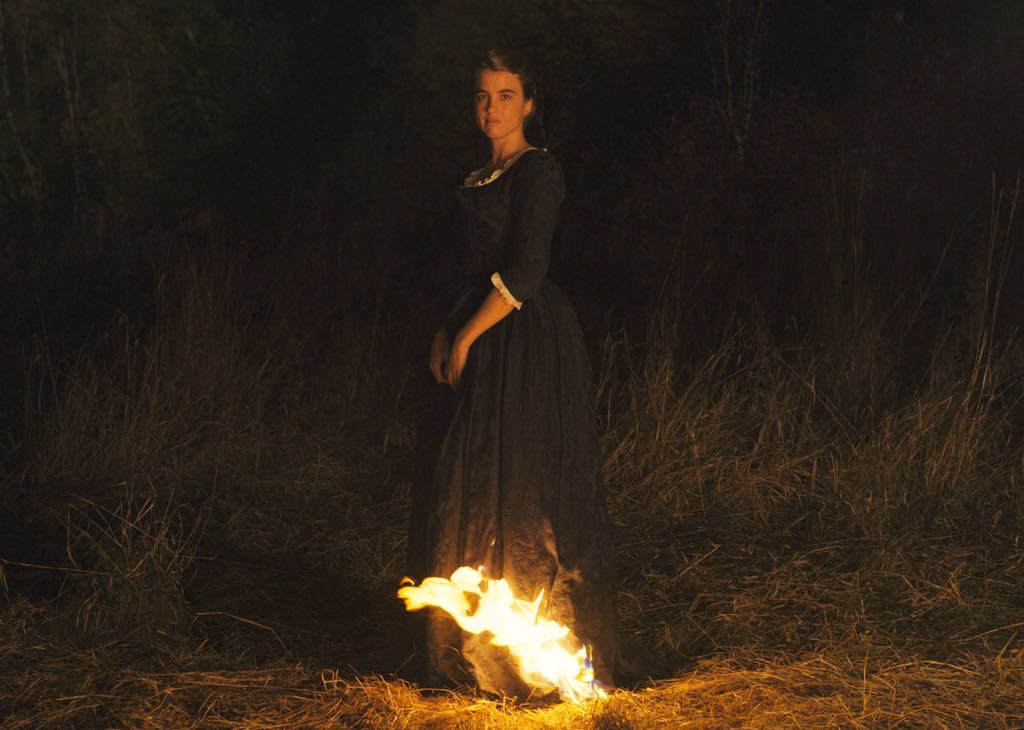
I am rather late in seeing Portrait de la Jeune Fille en Feu (Portrait of a Lady on Fire), directed by Céline Sciamma, but the movie, released in the United States on Valentine’s Day, is topical once again. It is up for numerous awards at the Césars (the French Oscars), to be held this coming Saturday, including Best Film, Best Director, Best Original Screenplay and Best Actress for both leads, Adèle Haenel and Noémie Merlant. It has already won numerous international awards and has had almost universal critical acclaim, with a 98 percent positive rating on Rotten Tomatoes.
Not only that, but everyone I know who has seen the film considered it brilliant. You can’t argue with that. Or can you?
I can. Portrait of a Lady on Fire is S-L-O-W and too long at just over two hours. There is something to be said for quiet movies with little action, but this one mostly bored me (and my two friends).
Is its huge popularity due to the fact that it’s about forbidden lesbian love taking place in the past? Period lesbianism is a hot topic at the moment, and why not? It’s time to stop pretending that homosexuality is a recent invention. The film The Favourite postulates (plausibly) that Queen Anne slept with her female courtiers, and the TV series “Gentleman Jack,” based on a true story, tells the rousing story of an uncompromising woman who lived in early-19th-century England and who preferred women over men.
Portrait of a Lady on Fire is set even earlier, in the 18th century, on an isolated island in Brittany, where Héloïse lives with her mother (Valeria Golino) and a maid (Luàna Bajrami). The mother needs a portrait of Héloïse to send to the man in Italy she hopes to marry her daughter to and hires Marianne to come from the mainland to do the job.
The problem is that Héloïse refuses to have her portrait painted, so Marianne must work surreptitiously, observing her subject during their daily walks on the beach and at mealtimes, and secretly painting the portrait in her room. When Heloïse sees the painting, she is not pleased, but out of her anger a bond is formed and their hostile, nearly nonverbal relationship is transformed into friendship and eventually love.
Their brief idyll, which takes place while the mother is away from the island for several days, is soon put to an end. When Marianne’s work on a second portrait is finished, she must leave the island, and Héloïse must be married off.
The best part of the film is an amazing scene that takes place outdoors at night. A group of local women have gathered, we know not why, around a fire. They chat with each other for a while, then begin to intone sounds, which turn into a trancelike polyphonic song with unintelligible words.
It’s a moving scene but inexplicable in the context. Who are these women? Why have they gathered around a fire at night? What is this song they are singing? Is it some kind of island tradition, or are they witches? I discovered later that the director invented both the music and the words to the song. It may not be authentic or have any basis in tradition, but it makes for a great cinematic moment that stands out even more because there is no other music in the film, except at the very end.
Meanwhile, Heloïse and Marianne are circling around the fire, eyeing each other lasciviously, when the hem of Heloïse‘s dress catches on fire. She doesn’t seem to notice, so intently are her eyes locked onto Marianne’s, until some of the women smother the blaze with a blanket.
Looking is a theme that is effectively and delicately handled in the movie. Marianne falls in love with Heloïse while studying her for the portrait, and it could be said that Heloïse is seduced by Marianne‘s intense gaze. And there is a lovely moment when the two women and the maid discuss why Orpheus turns back to look at Eurydice in the myth when he knows that in doing so, he is dooming himself to never see her again. Marianne suggests that perhaps “he wasn’t making the choice of a lover but of a poet.”
After she leaves the island, Marianne “sees” Heloïse in another painted portrait of her with her child, her finger marking the page in a book where Marianne had drawn a picture of herself naked as a keepsake for her lover.
She sees her once again at the end of the movie, but I won’t describe what happens. Let’s just say that Marianne makes the choice of a poet.
As you can see, the film has many romantic and lyrical moments. If you can let it “wash over you like a Japanese film,” as one of my friends suggested, maybe the slow pace won’t bother you.
Favorite